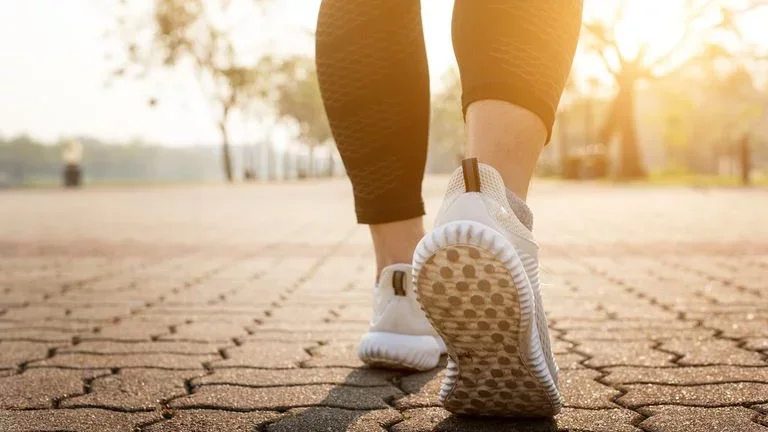Research
Projects
We combine multimodal recordings of the brain and body with movement tasks and virtual reality to understand how (dys)function in human brain circuits relates to disabling symptoms and their response to treatment.
Freezing of Gait
Freezing of a gait is a debilitating symptom in Parkinson's disease in which the walking is suddenly interrupted and the feet feel “glued to the ground.” A variety of triggers can cause freezing of gait, with common examples including maneuvering in small spaces, walking through a doorway, turning and anxiety. In some patients external cues and cognitive strategies—such as walking with rhythmic sounds, stepping on or over a visual target or counting—ameliorate freezing. Importantly, these symptoms are very heterogeneous: only some patients have freezing, and within this group patients differ in what triggers freezing and how they respond to external cues. We are investigating how brain signals relate to these diverse and heterogeneous features of gait freezing using mobile electrophysiology, motion capture and virtual reality. By characterizing these circuits, we may be able to develop personalized rehabilitation or neuromodulation therapies to improve freezing of gait in the future.
Cued Movement Facilitation
Movement initiation and rhythmic actions are impaired in patients with Parkinson’s disease. Reward and sensory cues, such as visual targets and rhythmic auditory tones, can improve movements in some patients. However, the mechanisms of this improvement are poorly understood, and in particular the reasons for heterogeneity across patients has been largely ignored in the literature. We combine kinematic analyses with multimodal brain recordings on multiple spatial and temporal scales to understand how various different cues facilitate movement. Understanding the neural mechanisms underlying movement facilitation due to cueing can inform neuromodulation therapies and lead to symptom improvement.
Rhythm Perception and Production
This research is motivated by the observation of auditory rhythms improving movements in some patients with movement disorders, as well as a wealth of prior research that has found engagement of motor areas in the brain during passive listening to music. Using intracranial recordings, we are examining whether basal ganglia neural oscillations couple to a musical beat and whether this brain activity is related to behaviors like beat perception performance and ability to move to the beat.
Techniques
Human Brain Recordings
Electrical signals are recorded directly from deep in the human brain via electrodes implanted for treatment purposes (deep brain stimulation, DBS). Studies performed in the operating room during DBS implantation can be combined with signals from the brain surface giving unique insights into how distant brain regions interact. Studies performed later allow a wide variety of tasks and movements, including walking.
Electrical brain waves are recorded from the scalp with a cap containing small disk electrodes. These non-invasive recordings are inexpensive and can be applied in a wide variety of settings and participants.
MRI is a non-invasive procedure that uses a large magnet to create detailed images of the brain and measure brain activity. While MRI is limited to tasks that can be performed while lying flat, in a small space and motionless head, the ability to map connections and activity across the whole brain at once gives unique insights into the integrity and function of brain networks.
Movement and Physiological Signals
Conventional motion capture and markerless pose estimation with high speed video allow detailed quantification of human movement synchronized with brain signals.
Eye tracking measures the location and size of the pupil, allowing us to quantify what people are looking at and when, as well as the size of the pupil. These measures give insights into attention, arousal, cognitive load and other functions intimately tied to movement and gait.
Neuromodulation
In DBS small electrodes are implanted into the brain to provide electrical stimulation that ameliorates specific symptoms. Measuring the effect of stimulation on movement and behavior provides important causal evidence for the role of stimulated brain networks in specific process.
